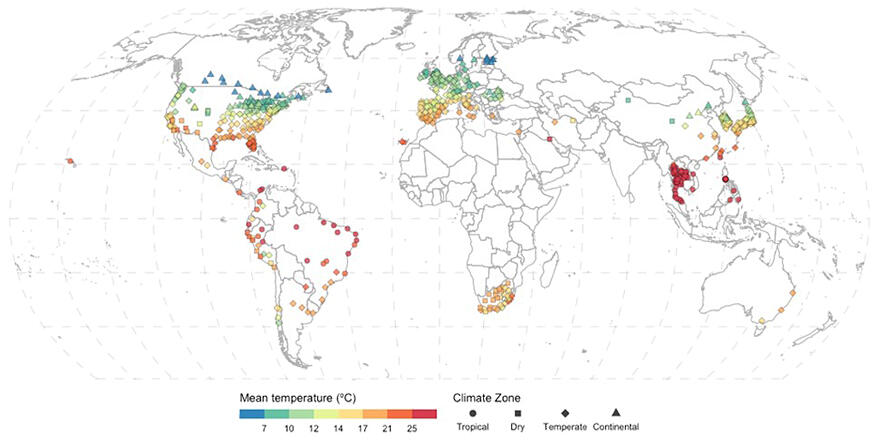Associate Professor Lina Madaniyazi of the School of Tropical Medicine and Global Health at Nagasaki University and Professor Masahiro Hashizume of the Graduate School of Medicine and Faculty of Medicine at the University of Tokyo, in an international collaboration with the London School of Hygiene and Tropical Medicine at the University of London, UK; Harvard University, USA; and other organizations, announced that climate change may affect the seasonality of mortality in the future. The research group predicted the seasonality of mortality from the 2000s to the 2090s in temperate, continental, and arid climate zones for all climate change scenarios. The results revealed that the mortality rates increased across 707 cities worldwide during warm seasons and that the rates decreased during cold seasons, although they remained at elevated levels. The results were published in The Lancet Planetary Health on February 7, 2024.

© 2024 Madaniyazi L, et al. Published by Elsevier Ltd. This is an Open Access article under the CC BY-NC-ND 4.0 license.
The seasonality of deaths is well known, with mortality rates usually tending to be higher in the colder seasons. In this study, the research group conducted a systematic and comprehensive assessment of future changes in the seasonality of mortality in diverse climatic zones. Daily time-series data on mean temperature and the number of deaths (limited to all causes or non-external causes of death) were collected through the Multi-Country Multi-City (MCC) Collaborative Research Network, which includes researchers from 43 countries and regions worldwide, including the London School of Hygiene and Tropical Medicine and Harvard University.
Using four climate change scenarios aligned with increased greenhouse gas emissions (Shared Socioeconomic Pathways: SSP1-2.6, SSP2-4.5, SSP3-7.0, SSP5-8.5), they predicted daily mortality rates from the year 2000 to 2099. Data on 126,809,537 deaths that occurred between 1969 and 2020 in 43 countries and territories (707 cities) were classified into four climate zones: temperate, continental, arid, and tropical. For the period of 2000 to 2099, the annual average temperatures in these 707 cities are projected to increase by 1.35℃, 2.73℃, 4.26℃, and 5.55℃ based on the SSP1-2.6, SSP2-4.5, SSP3-7.0, and SSP5-8.5 scenarios, respectively.
The results predicted that mortality rates during warm seasons would increase, and the rates during cold seasons would decrease from the 2000s to the 2090s in temperate, continental, and arid climatic zones under all scenarios. Mortality rates during cold seasons are projected to remain high. This trend accelerates as one moves from lower to higher greenhouse gas emission scenarios. Mortality peaks shift from colder to warmer seasons, indicating an increasing impact of seasonality. This effect is particularly pronounced in the second half of the century, indicating that different climate zones may have different seasonality impacts.
Madaniyazi commented, "By revealing the potential future changes in seasonality of mortality due to climate change, we believe that there will be a deepened understanding of planetary health. Moving forward, our aim is to clarify not only the seasonality changes in mortality but also other seasonality changes, such as those in diseases and health events. We aspire to generate insights that will serve as crucial guidelines for formulating adaptive strategies to address health issues brought about by climate change."
Journal Information
Publication: The Lancet Planetary Health
Title: Seasonality of mortality under climate change: a multicountry projection study
DOI: 10.1016/S2542-5196(23)00269-3
This article has been translated by JST with permission from The Science News Ltd. (https://sci-news.co.jp/). Unauthorized reproduction of the article and photographs is prohibited.




